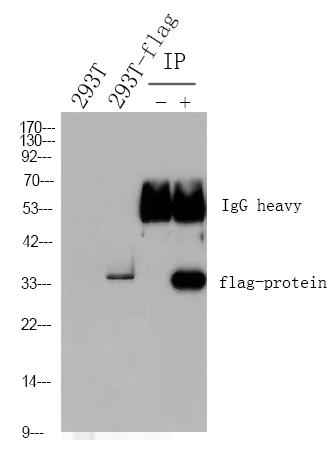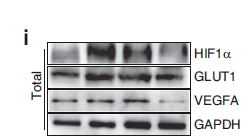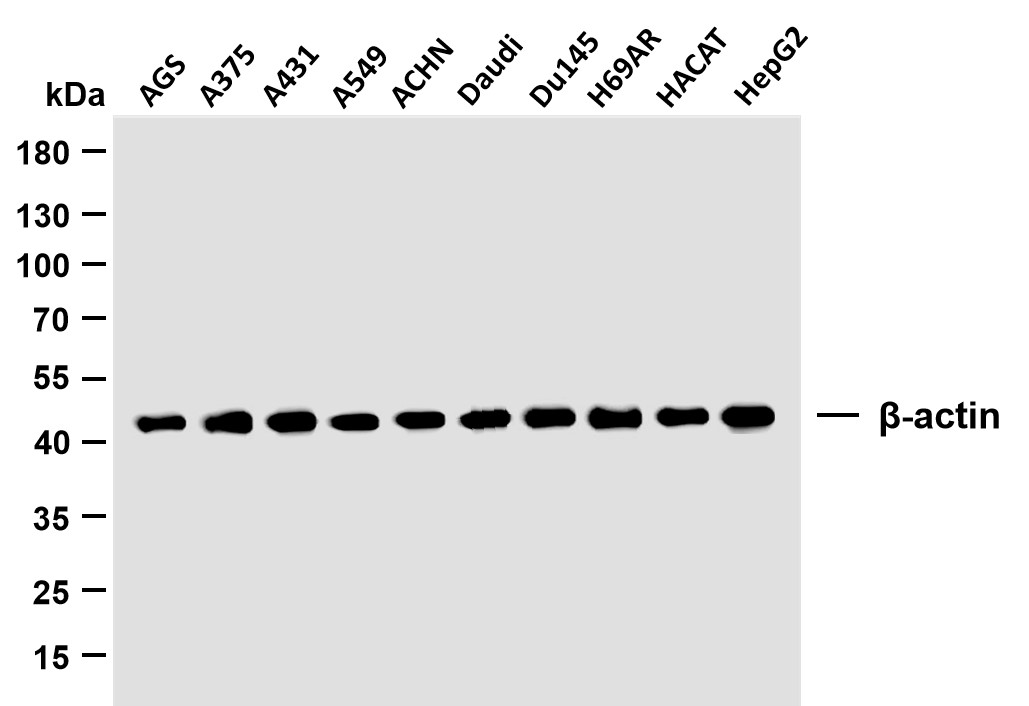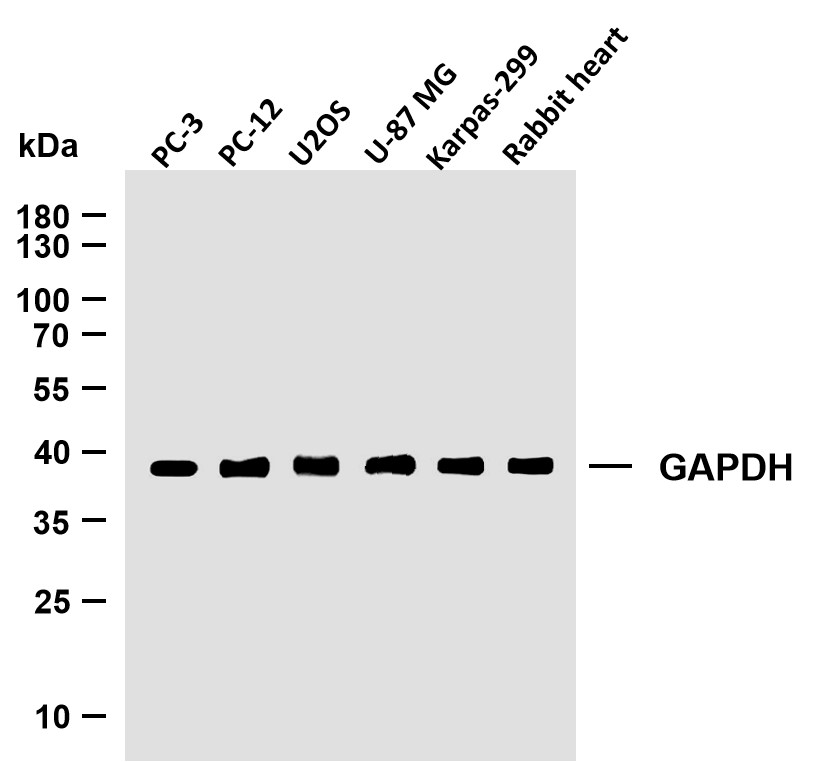
Catalog: YN2414
Size
Price
Status
Qty.
200μL
$450.00
In stock
0
100μL
$280.00
In stock
0
40μL
$150.00
In stock
0
Add to cart


Collected


Collect
Main Information
Target
FCG3B
Host Species
Rabbit
Reactivity
Human
Applications
WB, ELISA
MW
25kD (Observed)
Conjugate/Modification
Unmodified
Detailed Information
Recommended Dilution Ratio
WB 1:500-2000; ELISA 1:5000-20000
Formulation
Liquid in PBS containing 50% glycerol, and 0.02% sodium azide.
Specificity
FCG3B Polyclonal Antibody detects endogenous levels of protein.
Purification
The antibody was affinity-purified from rabbit antiserum by affinity-chromatography using epitope-specific immunogen.
Storage
-15°C to -25°C/1 year(Do not lower than -25°C)
Concentration
1 mg/ml
MW(Observed)
25kD
Modification
Unmodified
Clonality
Polyclonal
Isotype
IgG
Related Products
Antigen&Target Information
Immunogen:
Synthesized peptide derived from human protein . at AA range: 90-170
show all
Specificity:
FCG3B Polyclonal Antibody detects endogenous levels of protein.
show all
Gene Name:
FCGR3B CD16B FCG3 FCGR3 IGFR3
show all
Protein Name:
Low affinity immunoglobulin gamma Fc region receptor III-B (Fc-gamma RIII-beta) (Fc-gamma RIII) (Fc-gamma RIIIb) (FcRIII) (FcRIIIb) (FcR-10) (IgG Fc receptor III-1) (CD antigen CD16b)
show all
Background:
The protein encoded by this gene is a low affinity receptor for the Fc region of gamma immunoglobulins (IgG). The encoded protein acts as a monomer and can bind either monomeric or aggregated IgG. This gene may function to capture immune complexes in the peripheral circulation. Several transcript variants encoding different isoforms have been found for this gene. A highly-similar gene encoding a related protein is also found on chromosome 1. [provided by RefSeq, Aug 2012],
show all
Function:
Disease:The more active FCGR3B*01 allele has been associated with severe renal disease in certain systemic vasculitides.,Function:Receptor for the Fc region of immunoglobulins gamma. Low affinity receptor. Binds complexed or aggregated IgG and also monomeric IgG. Contrary to III-A, is not capable to mediate antibody-dependent cytotoxicity and phagocytosis. May serve as a trap for immune complexes in the peripheral circulation which does not activate neutrophils.,miscellaneous:Encoded by one of two nearly indentical genes: FCGR3A and FCGR3B (Shown here) which are expressed in a tissue-specific manner. The Phe-203 in FCGR3A determines the transmembrane domains whereas the Ser-203 in FCGR3B determines the GPI-anchoring.,polymorphism:There are three allelic forms of FCGR3B: FCGR3B*01 (NA-1), FCGR3B*02 (HNA-1b, NA-2) (shown here) and SH. FCGR3B*01 and FCGR3B*02 are detectable with antibodies against the biallelic neutrophil-specific antigen system NA.,PTM:Glycosylated. Glycosylation plays an inhibitory role in the interaction with IgG3.,PTM:The soluble form is produced by a proteolytic cleavage.,similarity:Contains 2 Ig-like C2-type (immunoglobulin-like) domains.,subcellular location:Secreted after cleavage.,subunit:Monomer. Interacts with INPP5D/SHIP1.,tissue specificity:Expressed specifically by polymorphonuclear leukocytes (neutrophils). Also expressed by stimulated eosinophils.,
show all
Cellular Localization:
Cell membrane ; Lipid-anchor, GPI-anchor . Secreted. Secreted after cleavage.
show all
Tissue Expression:
Expressed specifically by polymorphonuclear leukocytes (neutrophils). Also expressed by stimulated eosinophils.
show all
Research Areas:
>>Phagosome ;
>>Osteoclast differentiation ;
>>Neutrophil extracellular trap formation ;
>>Natural killer cell mediated cytotoxicity ;
>>Fc gamma R-mediated phagocytosis ;
>>Leishmaniasis ;
>>Staphylococcus aureus infection ;
>>Tuberculosis ;
>>Systemic lupus erythematosus
>>Osteoclast differentiation ;
>>Neutrophil extracellular trap formation ;
>>Natural killer cell mediated cytotoxicity ;
>>Fc gamma R-mediated phagocytosis ;
>>Leishmaniasis ;
>>Staphylococcus aureus infection ;
>>Tuberculosis ;
>>Systemic lupus erythematosus
show all
Signaling Pathway
Cellular Processes >> Transport and catabolism >> Phagosome
Organismal Systems >> Immune system >> Neutrophil extracellular trap formation
Organismal Systems >> Immune system >> Natural killer cell mediated cytotoxicity
Organismal Systems >> Immune system >> Fc gamma R-mediated phagocytosis
Organismal Systems >> Development and regeneration >> Osteoclast differentiation
Human Diseases >> Immune disease >> Systemic lupus erythematosus
Reference Citation({{totalcount}})
Catalog: YN2414
Size
Price
Status
Qty.
200μL
$450.00
In stock
0
100μL
$280.00
In stock
0
40μL
$150.00
In stock
0
Add to cart


Collected


Collect
Recently Viewed Products
Clear allPRODUCTS
CUSTOMIZED
ABOUT US
Toggle night Mode
{{pinfoXq.title || ''}}
Catalog: {{pinfoXq.catalog || ''}}
Filter:
All
{{item.name}}
{{pinfo.title}}
-{{pinfo.catalog}}
Main Information
Target
{{pinfo.target}}
Reactivity
{{pinfo.react}}
Applications
{{pinfo.applicat}}
Conjugate/Modification
{{pinfo.coupling}}/{{pinfo.modific}}
MW (kDa)
{{pinfo.mwcalc}}
Host Species
{{pinfo.hostspec}}
Isotype
{{pinfo.isotype}}
Product {{index}}/{{pcount}}
Prev
Next
{{pvTitle}}
Scroll wheel zooms the picture
{{pvDescr}}


















